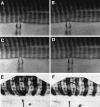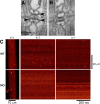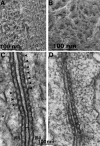The relationship between form and function throughout the history of excitation-contraction coupling
- PMID: 29317466
- PMCID: PMC5806676
- DOI: 10.1085/jgp.201711889
The relationship between form and function throughout the history of excitation-contraction coupling
Erratum in
-
Correction: The relationship between form and function throughout the history of excitation-contraction coupling.J Gen Physiol. 2018 Feb 5;150(2):369. doi: 10.1085/jgp.20171188901162018c. Epub 2018 Jan 22. J Gen Physiol. 2018. PMID: 29358187 Free PMC article. No abstract available.
Abstract
The concept of excitation-contraction coupling is almost as old as Journal of General Physiology It was understood as early as the 1940s that a series of stereotyped events is responsible for the rapid contraction response of muscle fibers to an initial electrical event at the surface. These early developments, now lost in what seems to be the far past for most young investigators, have provided an endless source of experimental approaches. In this Milestone in Physiology, I describe in detail the experiments and concepts that introduced and established the field of excitation-contraction coupling in skeletal muscle. More recent advances are presented in an abbreviated form, as readers are likely to be familiar with recent work in the field.
© 2018 Franzini-Armstrong.
Figures










Similar articles
-
Animal electricity, Ca2+ and muscle contraction. A brief history of muscle research.Acta Biochim Pol. 2000;47(3):493-516. Acta Biochim Pol. 2000. PMID: 11310955
-
Skeletal muscle excitation-contraction coupling: who are the dancing partners?Int J Biochem Cell Biol. 2014 Mar;48:28-38. doi: 10.1016/j.biocel.2013.12.001. Epub 2013 Dec 24. Int J Biochem Cell Biol. 2014. PMID: 24374102 Review.
-
[Excitation-contraction coupling in skeletal muscle: questions remaining after 50 years of research].Biomedica. 2009 Mar;29(1):140-60. Biomedica. 2009. PMID: 19753848 Review. Spanish.
-
Bridging the myoplasmic gap II: more recent advances in skeletal muscle excitation-contraction coupling.J Exp Biol. 2016 Jan;219(Pt 2):175-82. doi: 10.1242/jeb.124123. J Exp Biol. 2016. PMID: 26792328 Review.
-
History of electrophysiology and the patch clamp.Methods Mol Biol. 2014;1183:1-19. doi: 10.1007/978-1-4939-1096-0_1. Methods Mol Biol. 2014. PMID: 25023299
Cited by
-
Caveolae and Bin1 form ring-shaped platforms for T-tubule initiation.Elife. 2023 Apr 21;12:e84139. doi: 10.7554/eLife.84139. Elife. 2023. PMID: 37083699 Free PMC article.
-
Differential physiological roles for BIN1 isoforms in skeletal muscle development, function and regeneration.Dis Model Mech. 2020 Nov 24;13(11):dmm044354. doi: 10.1242/dmm.044354. Dis Model Mech. 2020. PMID: 32994313 Free PMC article.
-
Introduction to the Special Issue "Skeletal Muscle Atrophy: Mechanisms at a Cellular Level".Cells. 2023 Feb 3;12(3):502. doi: 10.3390/cells12030502. Cells. 2023. PMID: 36766844 Free PMC article.
-
Dysregulation of Mitochondrial Ca2+ Uptake and Sarcolemma Repair Underlie Muscle Weakness and Wasting in Patients and Mice Lacking MICU1.Cell Rep. 2019 Oct 29;29(5):1274-1286.e6. doi: 10.1016/j.celrep.2019.09.063. Cell Rep. 2019. PMID: 31665639 Free PMC article.
-
FKBP8 Enhances Protein Stability of the CLC-1 Chloride Channel at the Plasma Membrane.Int J Mol Sci. 2018 Nov 28;19(12):3783. doi: 10.3390/ijms19123783. Int J Mol Sci. 2018. PMID: 30487393 Free PMC article.
References
-
- Almers W. 1980. Potassium concentration changes in the transverse tubules of vertebrate skeletal muscle. Fed. Proc. 39:1527–1532. - PubMed
Publication types
MeSH terms
Substances
LinkOut - more resources
Full Text Sources
Other Literature Sources
Miscellaneous

